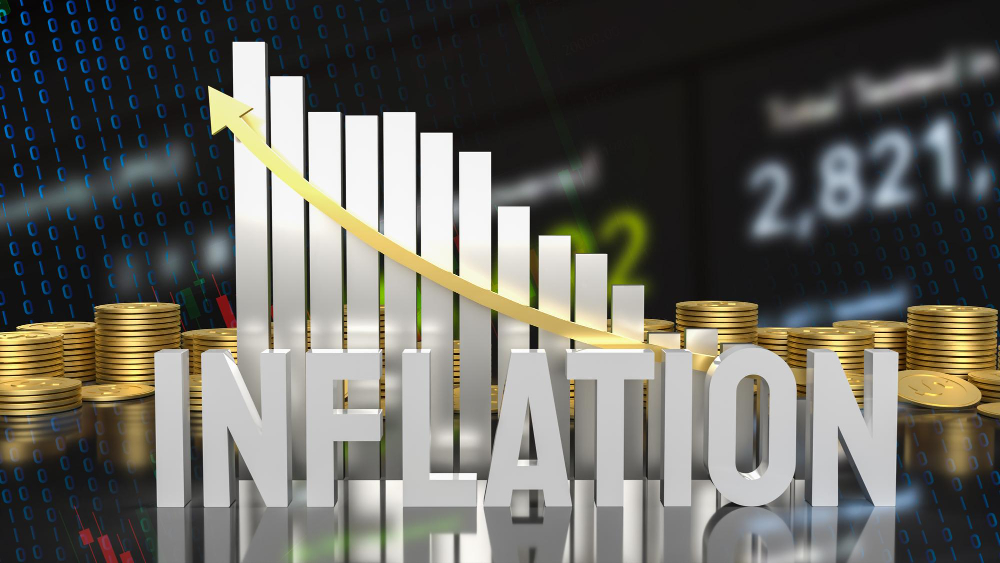These days, inflation is on our minds. It affects our shopping costs, savings, and investment income. Please continue reading to discover what inflation is, why it occurs, and how your money can be involved.
These days, shoppers experience a lot of sticker shock when visiting any store. However, a trip to the grocery store might be very upsetting. Basic food costs appear to increase weekly. To attempt and comprehend why this is taking place may be helpful.

Inflation in Canada started to moderate towards the beginning of 2023. However, this decline came after months of rising inflation, which peaked in June 2022 at 8.1%, a 39-year high. You can blame the epidemic for supply constraints and increased demand, which increased the price of numerous things.
• Between March 2020 and December 2022, Canada’s average advertised home rental increased by more than 17%.
• Housing cost a rental of $2,000 during the pandemic’s beginning. In December 2022, that renter had paid close to $2,350.
This demonstrates how inflation damaged Canadian household budgets.
However, how does inflation affect your investments? The quick response is that it may present a “stealth” threat. Your savings and investment income may be steadily eaten away by inflation. This essay will give you a better understanding of what inflation is, what causes it, and how it could affect your money.
The silent destroyer of your purchasing power is inflation.
Inflation is the growth rate in the price of goods and services over time. Many different factors might contribute to an increase in inflation. That involves tightening supply and escalating demand, as we observed with timber. Another possibility is a sharp increase in the price of labour and raw materials used in production. Frequently, these growing prices are passed down to consumers. For instance, the cost of petrol increases relatively immediately when the price of oil increases.
Statistics Canada developed the Consumer Price Index (CPI) to determine the inflation rate in Canada. Every month, it evaluates the price of over 700 products, including those for food, clothing, housing, and education. The CPI’s constituent parts are constantly changing. Furthermore, over the 42 years between December 1980 and December 2022:
Canada had an average annual inflation rate of 2.89%, or, as the Bank of Canada (BoC) puts it, a 2.89% decline in the dollar’s purchasing power.
Accordingly, an item that costs $100 this year would, on average, cost $102.89 the following year. If you have a job, your pay may increase to keep up with inflation. If you’re retired and living on a fixed income, what happens? Your ability to buy more goods and services (purchasing power) gradually decreases over time.
Recently, inflation has been significantly higher than typical. Customers are now more than ever scrutinizing prices to acquire the most value possible.
Portfolios of stocks and inflation
How you invest will determine how inflation affects your stock portfolio, just like for bonds. Let’s start by looking at dividend-paying stocks, a popular source of income for investors. They often receive a quarterly payment from the cash flow or profits of the company. And typically fall between 1 and 10%.
How does inflation affect dividend payouts? Certain businesses, like Utility, may thrive in an inflationary atmosphere. This is so that companies may pass on growing costs to customers. As a result, they can raise dividend payments. Take into account an inflation rate of 3%. You might benefit if a corporation raises its dividend to 5%.
The opposite would be true if a corporation had to reduce its payout due to inflation-driven cost increases. So once more, the composition of a portfolio’s dividend-paying equities determines how inflation affects dividend income. Because of this, dividend fund managers spend a lot of time researching a firm before investing. They want to learn if the company’s dividend is stable and likely to rise.
Property and commodities as inflation hedges
Remember that a portfolio’s ability to withstand inflation will significantly influence what is in it. To do this, investment managers may invest in businesses like utilities while inflation increases. Or it might be a business that produces a necessary good and can pass on increased costs to customers.
They might also invest in particular asset classes, such as real estate and infrastructure. In the past, these have done well when there is inflation. For instance, the Canada Pension Plan’s investment portfolio is very diversified.
Historically, real estate investment trusts (REITs), which trade like stocks, have been a choice for hedging inflation. This is because tangible assets, like a house, frequently increase at a pace equal to or greater than the inflation rate. This is partly because, both for private use and rental usage, supply continually exceeds demand. Additionally, inflation turns into a friend if someone purchases a home at a fixed loan rate. This is so that the fixed cost of the loan may be more easily managed as salaries increase in line with inflation.
Usually, commodities increase when inflation picks up speed. When things returned 22% in 2022, they were the best-performing asset class. Another illustration is the price of energy, which typically follows the direction of inflation. In 2022, only the energy sector outperformed the other 10 S&P 500 index sectors. The S&P 500 dropped by roughly 19% in that year. However, the index’s energy sector saw a 59% increase, providing much-needed relief from inflation.
Inflation mitigation demands a strategy.
As we’ve seen, inflation can reduce your ability to buy things. But as we’ve also mentioned, a portfolio’s contents matter when inflation rises. Meeting with an advisor is, therefore, the best recommendation. They can evaluate your financial situation and offer suggestions for possible countermeasures to the risk that inflation poses.



